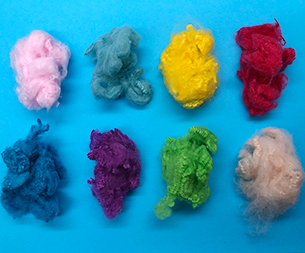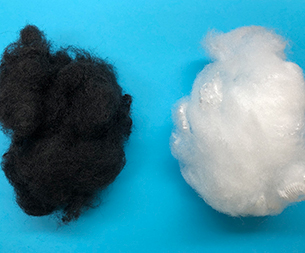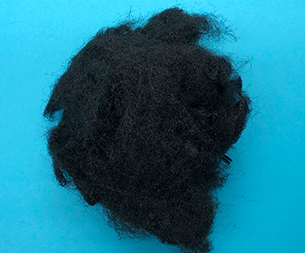The shockwave of "de-Sinicization" in Vietnam's textile industry:
A butterfly effect of supply chain reconfiguration
When the machines in Vietnamese factories suddenly stopped rumbling on Chinese-made yarns, this seemingly partial supply chain adjustment is triggering a cross-regional industrial earthquake. According to the latest data from Vietnam's customs, China's imports of textile raw materials plunged by 23.8% year-on-year in the first four months of 2024, while its exports of ready-made garments to the United States increased by 17.5% against the trend during the same period. This tactical combination of "supply cut-off + order snatching" is pushing Chinese textile raw material enterprises into a predicament of "being blocked from the front and pursued from the back" - the fluctuations in upstream oil prices have not yet been digested, and the largest downstream customer suddenly turns away. The inventory turnover days of the entire chemical fiber industry chain have climbed to the peak since 2014.
The counterproductive effect of technological bottlenecks
Vietnam's "de-Sinicization" strategy has exposed the technological gap in the global textile industry. Although 90% of the workers in Vietnam's sewing workshops are proficient in operating Japanese heavy machinery equipment, the domestic chemical fiber production capacity can only meet 30% of the spinning demand. This abnormal pattern has led Vietnamese factories to have to accept 15-20% premium quotations from suppliers in Indonesia and Thailand after announcing a reduction in purchases from China. A polyester producer in Shaoxing disclosed: "Now, Vietnamese customers take our technical parameters to Southeast Asia to compare prices, but come back to negotiate three months later - they find that the uniformity of dyeing of other products simply fails to meet the Chinese standards." This technological dependence has plunged Vietnam's supply chain reorganization into a paradox: it has to avoid explicit reliance on Chinese raw materials while being unable to bear the quality risks brought by substitutes.
The Prisoner's Dilemma under the tariff leverage of the United States
The 34% punitive tariff imposed by the United States on Vietnam looms like the Sword of Damocles, forcing the Vietnamese textile industry to engage in painful supply chain fragmentation. But the reality is far more complicated than the policy designers imagined: In order to meet the "certificate of origin" requirements of the United States, the contract manufacturers in Ho Chi Minh City have to disguise high-end spandex made in China as Korean goods for customs declaration, thus increasing the logistics cost per ton by 200 US dollars. This distorted trade practice is giving rise to new grey industrial chains. In 2024, the number of inquiries about "re-export trade" received by a certain customs declaration company in Shenzhen increased by three times compared with the previous year. What is more serious is that the US Department of Commerce recently added 18 types of Chinese textile raw materials to the Entity List, directly cutting off the operational space for Vietnamese factories to re-export through third countries.
Facing the risk of supply chain disruption, Chinese textile enterprises are staging a desperate counterattack of "technology for market". The bio-based PTT fiber developed by a private research institute in Wujiang has successfully entered Adidas' supply chain after passing the German Rheinland certification, and its price per ton is 4,000 yuan higher than that of traditional polyester. This strategy of breaking through market barriers through technological breakthroughs is creating a demonstration effect in the Yangtze River Delta textile cluster. In the first quarter of 2024, the number of patent applications for functional fabrics across the country increased by 42% year-on-year, with 37% coming from chemical fiber enterprises. Meanwhile, leading enterprises in Shandong have raised their product premium capacity to a range of 35-40%, which is beyond the reach of their Vietnamese counterparts, by acquiring Italian design studios.
The essence of this supply chain game is the competition for technical standards and industrial ecology. While Vietnamese factories were still struggling for a 5% tariff preference, China's textile industry had quietly completed its transformation from "cost export" to "technology export". The intelligent fabric inspection system developed by a certain textile machinery enterprise in Ningbo is being installed in a factory in Bangladesh at a rate of 20 units per month. The millions of defect data collected by each device nourish the algorithm iteration of Chinese enterprises in reverse. The formation of this technological closed loop might foreshadowing the competitive rule of the future textile industry: whoever masters the process database will hold the ultimate say in the supply chain.
Declaration: The content of this article is compiled from the Internet and the copyright belongs to the original author. If there is any infringement, please inform us in time and contact us for deletion.
- The application of polypropylene
- Survival crisis amid the wave of
- Jiangsu Haibang New Material Co.
- In what aspects are the performa
- The characteristics and applicat
- Jiangsu Haibang New Material Co.
- In which fields does Jiangsu Hai
- Jiangsu Haibang New Material Co.
- What are the properties of polyp
- Polypropylene staple fiber has d
- Markets
- Automotive Products
- Nonwoven Lining
- Geosynthetics
- Liquid Filtration
- Apparel and Textiles
- Hygiene Products
- Building and Construction
- Other Markets
- Contact Us
- Contact Haibang





